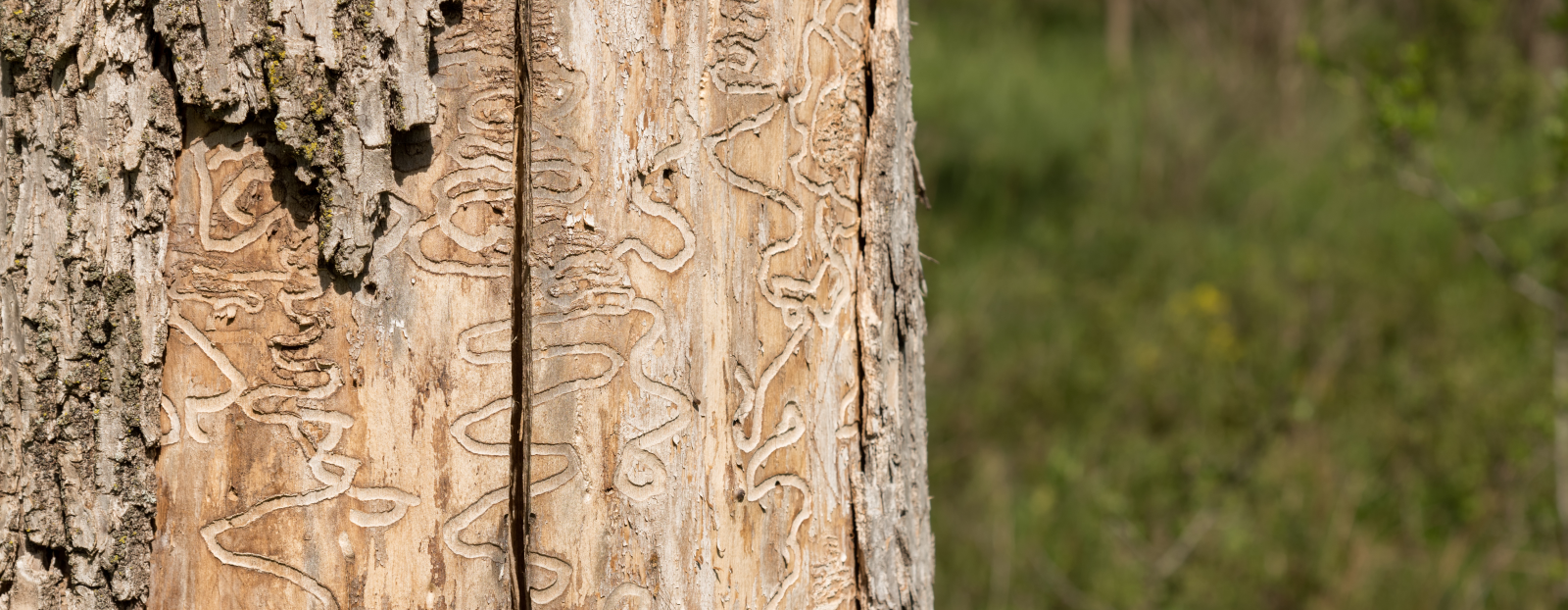The Emerald Ash Borer (EAB) is an invasive insect that has killed millions of ash trees across North America. The EAB was first detected in 2016 in Thunder Bay and has since spread across the city. Nearly one in five trees in the city are ash, meaning thousands of trees are under threat.
The City of Thunder Bay has a plan to manage the EAB, protecting some ash trees while removing others and replanting using different tree species. This will help keep our urban forest healthy and preserve the many benefits of neighbourhood trees.
Residents can help by following the ban on transporting firewood outside of city limits, recognizing the signs of hazard trees, and being aware of your responsibility as a property owner.
|
The Emerald Ash Borer, or Agrilus planipennis, has devastated ash trees in southwestern Ontario and parts of the United States since its discovery in Detroit, Michigan in 2002. The EAB is an invasive insect that attacks and kills all species of ash trees. The EAB is a major economic and environmental threat that has killed over 70 million ash trees across Ontario, costing millions to replace and reducing the benefits offered by urban trees. The beetles bore into the trunks and branches of ash trees and create extensive tunnels, weakening their nutrient-carrying structures, resulting in the death of the tree. These dead and weakened trees can then become a hazard. Based on the experience of other Ontario communities, it is likely that most of Thunder Bay’s ash trees will die over the coming years as a result of the EAB. Since the discovery of the EAB in Thunder Bay in 2016, the insect has spread across the city. Significant indicators of infestation have been detected in areas including the Westfort, Neebing, and McIntyre wards. It is expected that residents will begin to see the signs of ash tree decline more prominently.
|
|
City Council approved an EAB Management Strategy in 2016 that includes monitoring for infestation and treating select mature ash trees to preserve the city’s tree canopy, while removing remaining trees over time and replanting with other species. Each year, city foresters plant more trees than are removed, working toward the goal of planting 100,000 new trees by 2050 identified in the City’s Net-Zero Strategy. The City is currently protecting 850 ash trees with the use of TreeAzin, a biopesticide developed by the Canadian Forest Service using Neem tree seed extracts. City foresters monitor EAB spread and infestation levels using pheromone traps located in areas across the community. Infected ash trees on city lands will be removed strategically as part of the City’s EAB plan, and when they become a hazard to the public. You can learn more below about how to spot the signs of hazard trees and, if necessary, contact city foresters for removal. Property owners are responsible for the removal of hazard trees on their own property – see further details below.
|
|
Signs of beetle infestation include tree bark flecking, D-shaped emergence holes, die-back of the tree’s crown, suckering from the main trunk, and trees losing bark. When tree limbs are losing their bark, if the exposed wood is the size of an adult’s wrist and there is an immediate risk to people or property, those branches should be removed if possible. Broken/hanging branches (the size of an adults’ wrist) should be removed by a Certified City Arborist if possible. It is critical to estimate the size of the dead branch and evaluate whether or not it poses an immediate threat to the public. The City's urban forestry workers prioritize by hazard rating, concentrating on the highest-risk situations first. If you are seeing dead branches larger than an adult’s wrist over busy sidewalks or other areas where people may be in danger, please contact dispatch (807 625 2195) to report the issues. We will assess the situation immediately and address the situation in order of priority (danger rating). The EAB does not threaten the mountain ash, as it is not a true ash tree. It is in the genus Sorbus, while true ash trees are in the genus Fraxinus. Mountain ash have a greater number of smaller compound leaves and produce vibrant red berries in the late summer and early fall.
|
|
The City of Thunder Bay has a plan to remove infected ash trees on public lands like city boulevards when they become hazardous. However, property owners are responsible for ensuring trees on their private property do not become a hazard to members of the public when using municipal property. An example of this kind of hazard from a private tree could include a weakened branch overhanging a sidewalk. These rules concerning hazard trees on private property are outlined in the City’s tree bylaw. Property owners can take action to address hazard trees by contacting a company that uses certified arborists.
|
|
The Emerald Ash Borer can hitchhike on firewood, hiding under the bark of logs. The Canadian Food Inspection Agency forbids transporting firewood outside of Thunder Bay to prevent the spread of the EAB. Residents can help by not moving firewood and sourcing it near where you are going to burn it. Learn more about how you can help protect trees from invasive bugs.
|
|
Looking for more information on the EAB? Check out these resources. |
Contact Us
Tree Maintenance & Care
807-625-2195








